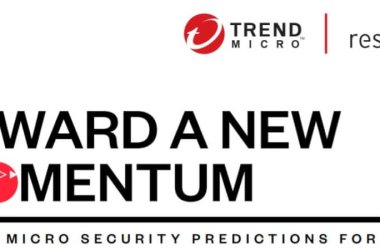You can’t call backup boring anymore. Data is exploding year on year. The backup market is growing fast. What used to be considered a mature and slow growth market is putting up some impressive numbers. Backup integrated VM protection, deduplication, snapshot management, appliances and some key changes to the operating model are driving the change.
In 2011 Symantec saw the trend of some organisations taking shortcuts with backup and archiving – such as snapshots or failovers in place of true backups, or using backup technology in place of archiving. However, snapshots are not sustainable or scalable, and when data is needed, recovery will not be easy. 2012 will see some major failures in the recovery of information if organisations don’t implement a holistic backup platform that addresses both physical and virtual environments and makes recovery of information easies for IT admins.
Additionally, organisations that are using a different backup tool for every platform has created an unsustainable level of complexity within their environment. There needs to be a higher level of centralization, especially if companies expect to move to the cloud and continue to virtualise their infrastructure.
Supporting points:
- Information Explosion: Data explosion, emergence of virtualisation, rapid adoption of new applications, and 24-7 business needs have broken traditional backup for small businesses to large enterprises. It’s time for a new approach. IDC reports state that the ‘digital universe’ will grow from 1.8 zettabytes in 2011, to more than 7ZB by 2015.
- The Backup Window is Broken: Due to data growth, the traditional 24-hour or weekend backup window is no longer possible for some organisations. A new approach is needed
- Remote office backup is broken: The process has become too complex for the resources many companies have in the remote office. A new approach is needed.
- Infinite Backup Retention Will Decrease: The policy of infinite retention of backups will abate in 2012. As companies are forced to deal with the massive volumes of data, new technologies will emerge that help companies eliminate this glut of information.
- More Platforms: VMware is still the go-to vendor when IT organisations talk enterprise-class server virtualisation. Almost 40 percent of the respondents to an Information Week survey have secondary hypervisors in use at their companies.
- The Operating Model of Backup Will Start to Change: Symantec will deliver new technology to help fix the challenges in the backup industry to make data protection easier, faster and more able to cope with huge volumes of data and tougher SLA’s.
“Information Governance Will Become A Positive Buzzword”
Information is the great enabler, and the great disabler depending on how it is managed. Companies that can gain control over the risks and costs with protecting their information will enable the adoption of new mobile, social media and cloud technologies. These organisations will leverage their information assets as competitive advantages and attract the best employees.
Companies that fail to control and protect their data will fall victim to it. Their lack of information governance will prevent the adoption of new technologies, and they will spend more on compliance and eDiscovery.
In 2012, vendors will bring together archiving, eDiscovery, encryption, backup, data loss prevention and other security technologies to give organisations better control over their information assets.
Supporting points:
- If you lose your iPad your first thought should not be excitement to get an iPad 2 and concern over having to re-create all of your data. Instead, it should be confidence that your personal and business data is protected, and that you can get it back.
- Gartner says that organisations are increasingly concerned with risk mitigation and looking at information governance strategies that align with their business priorities.
- A fundamental requirement to good governance is defining the sensitive data and identifying data ownership.
- By implementing software that gives deeper insight into their data, organisations will reduce storage costs and know when they should implement additional technologies including deduplication, compression, thin provisioning, storage tiering and other IT-as-a-service offerings. With added visibility, organisations can build highly reliable shared cloud services by using the existing physical and virtual infrastructure they have today.
“Private Cloud Will Not Become A Cloud In A Box”
Clouds do not come in a box. You can’t purchase hardware and expect it to suddenly have a cloud computing environment. Data centre managers who have implemented cloud technologies and virtualisation did so to simplify. Yet, at the core of this huge transition to the cloud, whether public or private, are business advantages including scalability, agility, control and measurability.
Running your data centre more like a cloud vendor is about people and processes. It’s about central management and visibility. It’s about automation. It’s about standardisation of operations. It’s about building service level focused offerings. And it’s about getting the best use of your resources. Buying new hardware does not achieve that. Changing the way you manage your data centre achieves does.
Cloud computing is a culture shift about how companies use IT and existing resources – servers, storage and people. Organisations must change how they purchase IT, how they consume IT, and how they organised IT to provide cloud services.
Supporting points:
- Among enterprises, leading inhibitors to private cloud deployment include the size and adequacy of existing infrastructure and limited IT budget for making major infrastructure changes. As a result, suppliers are focusing on new application deployments, highlighting the budget relief and improved value (services, response times, operational gains, etc.) of private cloud over existing IT infrastructure, and introducing solutions that allow for incremental infrastructure conversion. However, firms are overlooking the opportunity to leverage existing infrastructure and investments to build their private cloud.
- Symantec’s recent Virtualisation and Evolution to the Cloud Survey found that 67 percent of IT and C-level professionals are less confident about placing mission-critical applications on a private/hybrid cloud due to business requirements for high availability SLAs.
- This concern extends to their storage environment as well, with 82 percent of respondents selecting improved availability as an important goal for deciding to implement private storage-as-a-service.
- With IT resources going to address disasters and new regulations, IT organisations must look to build and manage their cloud environments from the existing infrastructure.
- Vendors will look for ways to offer services and solutions that enable this so that organisations can confidently implement their cloud architectures – including both management and security.
- Vendors need to offer cloud solutions that support the following three initiatives:
- Scalability: IT is looking for the ability to grow and shrink storage based on business patterns without disruption to applications, even when migrating between different storage vendors or operating system platforms. With everyone facing cost and budget controls, premium storage is often out of the question. Commoditised disk can provide premium features you expect: deduplication, tiering, snapshots, replication, and more. But only if you have the right tools that meet those needs. And this helps bring the agility companies are looking for from private clouds.
- Centralised management and control of operations: You can’t manage what you can’t see. And multiple solutions are just a precursor to a management headache for businesses and IT. A constant in the universe – or the cloud – is that IT needs a single management console to automate operations and provide a global view of applications and heterogeneous infrastructure running on different physical and virtual platforms. Only with this capability will the benefits of more efficient operations and reduced downtime be achieved.
- Chargeback: The transition to the cloud can make these a reality, if done properly. IT can check storage or utilisation and charge back based on actual usage even in a multi-tenant computing environment. Historically, chargeback reporting has been a difficult, manual, and expensive task. Today, that work can be offloaded to solutions that provide automatic and unified global chargeback reporting across multi-vendor storage, in real time, so that you know who is using what, when, instantly.
“Increased Interdependence of Physical and Virtual Technologies”
Virtualisation projects often start as a small project and eventually grow into large portions of the IT environment. In 2012, many companies will combine the VM project teams and infrastructure with corporate IT. This will highlight the need for physical and virtual assets to work together as a platform.
Often IT professionals get so consumed with the buzz surrounding virtualisation that they forget that virtualisation still runs on physical hardware. And, all the new hardware that is needed for those new projects, meaning more capital costs up front, but more painfully, less utilisation due to more server/storage islands. Companies that adopt a silo approach will be laggards in the VM adoption race. Their ROI for virtualisation will continue to decrease as operational costs of running separate environments slow the ability of organisations to convert from physical to virtual. The days that companies could afford separate storage management and backup software for virtual and physical servers are numbered. The answer to managing this complexity is standardising across their various platforms with tools that work across the various physical and virtual platforms for systems management, availability, back-up, storage management, security, etc.
As a result the security, storage management and backup of both physical and virtual assets together will become the standard.
Supporting points:
- In addition to visibility into data ownership, organisations need to have more granular visibility across their physical and virtual environments.
- According to an Information Week survey rating the importance of a dozen virtualisation features, survey respondents cited high availability as number one and price a very close second.
- The same survey shows that of virtualisation technologies, server and storage virtualisation are the most mature with 45 and 43 percent of enterprises implementing.
- Organisations are leveraging virtualisation for business-critical applications as well: 59 percent plan to virtualise database applications in the next 12 months, 55 percent plan to virtualise web applications, and 47 percent plan to virtualise email and calendar applications, according to the Information Week survey.
- According to a Symantec survey, organisations typically use different teams for physical and virtual environments, increasing costs through man-hours, training, and tools. The survey demonstrated that organisations using separate teams are less confident in backup and recovery and the teams are less satisfied with reliability. So much so that 3 of 4 using separate teams are open to consolidating to one team. And for those using multiple products, 77 percent would consider switching to one backup solution.
- By using a single solution to backup both physical and virtual servers, organisations save on staffing and training costs, and they typically find that it is easier to search and recover files, troubleshoot and report on backups (53 percent easier to staff and train; 52 percent easier to alert, troubleshoot and report; 51 percent easier for search and recovery)






